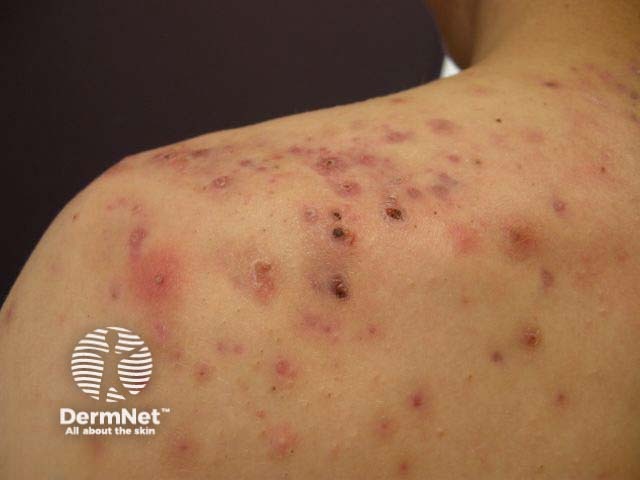Main menu
Common skin conditions

NEWS
Join DermNet PRO
Read more
Quick links
Diagnosing acne is easy. Or is it? Acne has a variety of clinical presentations, and there are a large number of skin conditions that may look similar.
Acne may be confidently diagnosed when there are both typical noninflammatory and inflammatory lesions in the expected distribution in a patient of the right age.
Acne usually affects the face, but it may affect the neck (especially under the jawline), anterior chest, shoulders and upper back. Rarely it extends to upper arms, lower back and buttocks. Rarely it may be segmental (cutaneous mosaicism) or limited to an epidermal naevus (Becker naevus, comedone naevus).
Its onset is often at puberty or during adolescence, but acne may arise in infancy or start for the first time during adult life. It affects males and females equally, but tends to be more severe and extensive in males, and of earlier onset and more prolonged in females.
For each of the sixteen cases, study the image(s) and then answer the questions. You can click on the image to view a larger version if required.
Each case should take approximately 2 minutes to complete. There is a list of suggested further reading material at the end of the quiz.

Name the skin lesion/s.
Nodulocystic acne
Describe the condition
Nodulocystic acne refers to acne in which there are nodules, cysts and scars. It is usually accompanied by many papules, pustules and comedones. It often involves the neck and trunk.
Acne conglobata is a severe form of nodulocystic acne in which there are abscesses and sinuses. It results in marked scarring.